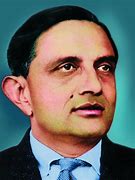Description
Vikram Sarabhai (1919–1971) was a visionary Indian scientist and space pioneer, often regarded as the father of the Indian space program. His contributions to science, technology, and space exploration have had a lasting impact on India’s scientific and technological landscape.
Early Life and Education
Vikram Sarabhai was born on August 12, 1919, in Ahmedabad, Gujarat, into a prominent and wealthy family. He was educated at various institutions, initially in India and then at Cambridge University in the United Kingdom, where he pursued a degree in Physics. His time at Cambridge was marked by his work in cosmic rays, which was a significant area of research during that period.
Contributions to Science and Space Exploration
1. Early Career and Scientific Work:
- Cosmic Rays Research: Sarabhai’s early work in cosmic rays, conducted at the Indian Institute of Science in Bangalore, established him as a prominent scientist. His research contributed to the understanding of high-energy particles from space.
- Industrial Development: Sarabhai was also instrumental in the development of several key industries in India, including the establishment of the Indian Institute of Management Ahmedabad (IIMA), which has become one of India’s leading business schools.
2. Indian Space Program:
- Founding of ISRO: Vikram Sarabhai is best known for his role in establishing the Indian Space Research Organisation (ISRO). In 1962, he founded ISRO with the vision of leveraging space technology for national development.
- Early Satellites: Under Sarabhai’s leadership, India launched its first satellite, Aryabhata, on April 19, 1975, from the Soviet Union. This marked the beginning of India’s space journey.
- Satellite Applications: Sarabhai envisioned space technology not just for scientific purposes but also for practical applications in fields like telecommunications, meteorology, and agriculture. His work laid the foundation for satellite-based services in India, including the Indian National Satellite System (INSAT) and the Indian Remote Sensing (IRS) satellites.
3. Space Research and Development:
- Satellite Launch Vehicles: Sarabhai's vision extended to developing indigenous satellite launch vehicles. This ambition led to the creation of the Satellite Launch Vehicle (SLV) program, which eventually evolved into the Polar Satellite Launch Vehicle (PSLV) and the Geosynchronous Satellite Launch Vehicle (GSLV) programs.
Legacy and Recognition
1. Visionary Leadership:
- Sarabhai’s leadership and foresight in space technology and industrial development were instrumental in shaping modern India. His work bridged the gap between scientific research and practical applications, contributing significantly to national development.
2. Awards and Honors:
- Sarabhai received numerous accolades and honors for his contributions to science and technology, including the Padma Bhushan, one of India’s highest civilian awards.
3. Institutions and Tributes:
- Numerous institutions and facilities in India are named in his honor, including the Vikram Sarabhai Space Centre (VSSC) in Thiruvananthapuram, which is a major center for space research and development.
Death and Legacy
Vikram Sarabhai passed away on December 30, 1971, at the age of 52. His death was a significant loss to the scientific community and to India’s space program. However, his legacy endures through the continued success and growth of India’s space endeavors and technological advancements.
Sarabhai’s vision and contributions have left an indelible mark on the fields of space science and technology, and his work continues to inspire future generations of scientists and engineers in India and beyond.
